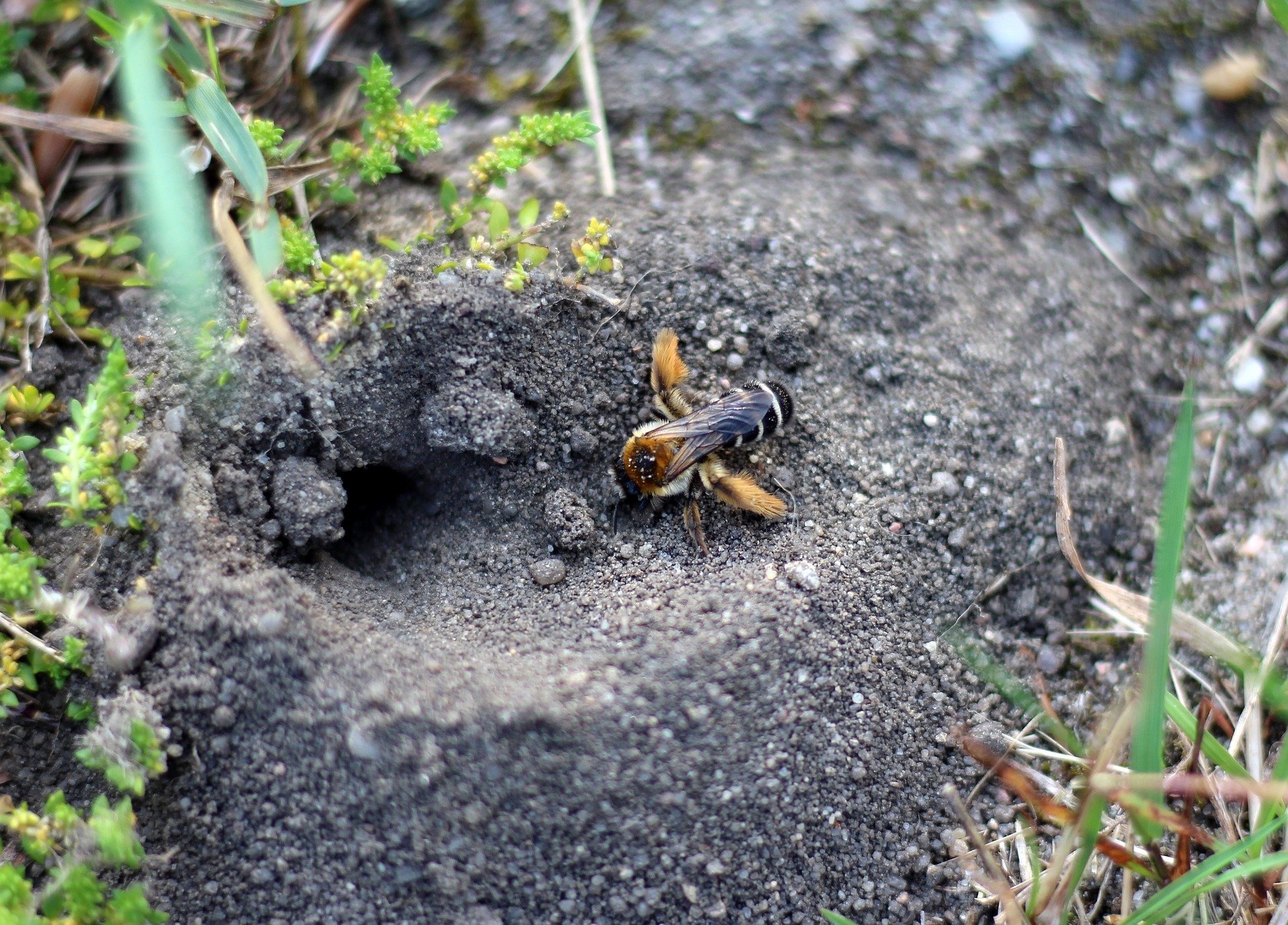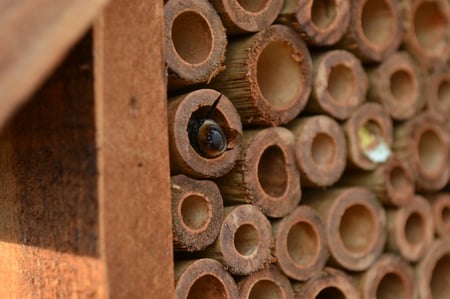
Some 4,000-5,000 species of bees are native to the United States (with around 500 of those residing in Illinois) and their habitat is disappearing quickly. Needless to say, we’re not cool with that.
When you think of bees, it’s a safe bet you see honeybees swarming over the outside of a hive. Videos from elementary school showing them performing their intricate dances to indicate sources of pollen, direction and distance. Perhaps a bumblebee or two.
But these simplistic images of pollinators held by most Americans – and others around the world – are problematic. Not only are they limited in the extreme, but they lend the impression that all bees are social creatures.
The reality is far more complicated. While honeybees and bumblebees are certainly social, most bees are actually solitary. That means aside from mating, they live, eat and sleep alone.
(And not in a sad way. They’re making a choice, okay??)
Even more problematic: Because we fail to recognize the importance of native solitary bees, we don’t do much to accommodate their habitats (many of which are in steady decline). And if we want to keep enjoying, you know, food … then that needs to change. It’s time to learn how to create nesting habitat for native pollinators.
Why Nesting Habitat for Native Pollinators?
 Unlike honeybees, which have commanded media attention for more than a decade (show hogs), native bees don’t get much of the limelight. Don’t get us wrong; Colony Collapse Disorder is real and devastating, but let’s not lie: Most of our concern stems from the fact that without bees to pollinate our crops, we’d be [bleeped].
Unlike honeybees, which have commanded media attention for more than a decade (show hogs), native bees don’t get much of the limelight. Don’t get us wrong; Colony Collapse Disorder is real and devastating, but let’s not lie: Most of our concern stems from the fact that without bees to pollinate our crops, we’d be [bleeped].
Turns out, though, that wild bees are responsible for pollinating a wide variety of crops. In a paper entitled Wild Pollinators Enhance Fruit Set of Crops Regardless of Honey Bee Abundance, published in Science, study authors explained that “In more than 40 important crops grown worldwide, wild pollinators improved pollination efficiency, increasing fruit set by twice that facilitated by honeybees.”
Quite apart from what they do for us, native bees are a critical part of the food web of other species, as well as the natural environmental balance as a whole. Without bees to pollinate, some plants would fail to reproduce, some animals that fed on those plants would fail to thrive, their predators would have a more limited food supply, and so it goes.
We could go on … and on … about the importance of native bees, but we trust you get the point. Now we need to make sure those bees have homes, so they can keep doing what they do.
Where Do Native Bees Nest – and How Can You Help?
 Native bees use a variety of nesting habitats. Some take advantage of holes that are already there, while others play a more active role in the creation of their nests.
Native bees use a variety of nesting habitats. Some take advantage of holes that are already there, while others play a more active role in the creation of their nests.
As the USDA says, “Most native bees nest underground in areas that are sunny, well-drained, and either bare or partly vegetated.” When they find a good place, they’ll tunnel in, lay their eggs, deposit a ball of pollen and nectar for the young, then seal up the cavity. (Are we alone in thinking that’s super cute?)
Among the most popular natural nesting habitats are:
- Open patches of dirt
- Pieces of wood
- Piles of (plant) debris
- Hollow grass stems (native bunch grasses)
One of the best ways to give bees a place to nest is to leave (plant) debris and wood lying around, ideally in an out-of-the-way place where it won’t be disturbed, and where nothing is growing around it. Retaining stumps and snags is another simple way to provide habitat without doing much.
Another easy but vital action is to skip the landscaping “fall clean-up” and wait to cut back grasses, forbs (non-grass herbaceous plants) and various fallen branches until after it has warmed up in the spring. This allows bees to safely overwinter and emerge in the spring, (instead of sending them to the dump).
If you want to take a more active role, you can also create native bee nesting sites by ordering hollow reeds and stems of bamboo, then bundling them and placing them in PVC or another hollow tube to keep them dry. If the cuteness factor appeals to you, try actual houses.
Don’t be afraid of stings, either. You have to work very, very hard to get a native bee to sting you. So go ahead and put those nests right up close to your pollinator garden!
Create Your Native Bee Nesting Habitat Today
Think how many nesting habitats we could create if everyone hosted just one or two native bees per yard. This is a great way to improve the urban ecology of your neighborhood and of your city as a whole. Combine with a pollinator garden for seasonal beauty and a major environmental one-two punch.
Want to learn more about enhancing the ecological value of your yard? We would love to help, so get in touch today!

